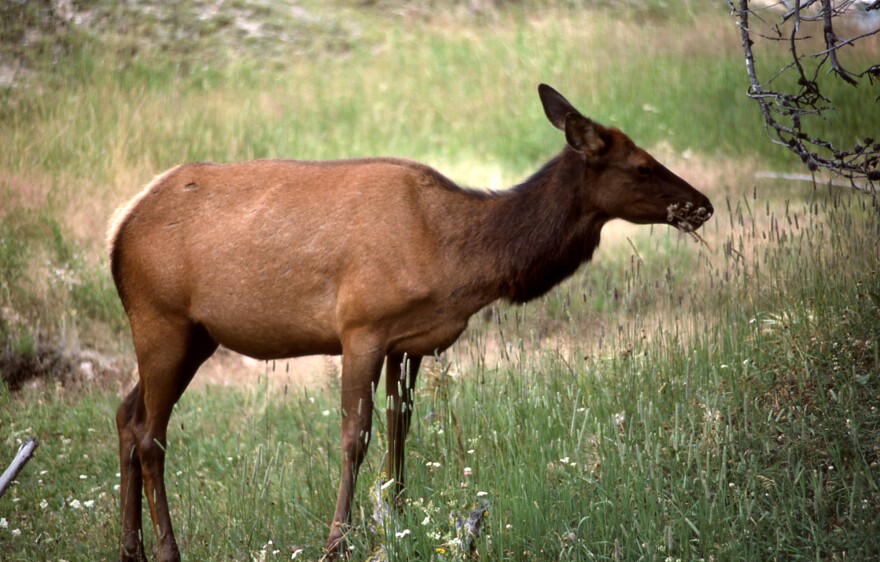Arizona’s high country has seen some recent snowfall with more on the way. But much of the state remains in “exceptional” drought status. That’s been hard on wildlife. Natural ponds and stock tanks have dried up. A nonprofit group of hunters and conservationists is trying to help by refilling those watering holes for the benefit of elk and other animals. KNAU’s Melissa Sevigny spoke with Steve Clark, executive director of the Arizona Elk Society, about the program.
Tell me a little bit about how this program works.
The Arizona Elk Society is a wildlife conservation organization. We specialize all of our resources on elk… We started in 2001, we started hauling water. 2002 was a huge drought year also. We actually jumped in as volunteers and grabbed some trailers and went out and stated hauling water. It kind of progressed from there. For the first 5-6 years it was very informal, we just did it as volunteers, people that loved to be out there and help the elk. Obviously when you’re hauling the water for elk, you’re benefitting all the wildlife. Including the bees, the birds, the bats, all kinds of things. It’s awesome… we’ve had times when the bees have swarmed the water when we’re putting it in, we’ve had times when the birds, just hundreds and hundreds of birds landed on the fence all of the sudden, waiting for us to leave. So back in about 2006 we met with Game and Fish, and said, listen you guys are hauling water and we’re hauling water, maybe we should work together…. So we made an agreement with them to say, we will take care of these units around Flagstaff, because we have some great volunteers in Flagstaff… so we wanted to do northern Arizona.
Can you tell me what the conditions are like on the rangeland this year?
This is the worst year in history, in recorded history. There’s no doubt. I saw a report the other day that showed that 73 percent of the state is in dire need. That’s the worst it’s ever been… Water is obviously the key to life…. In a drought there’s zero water. The ranchers are hauling water, the towns are hauling water. Everybody’s hauling water right now. If these wildlife didn’t have water, they have nowhere to go.
Where does the water come from and who pays for that?
We pay for most of the water, we have accounts with the City of Flagstaff to haul effluent water, all the water that goes to golf courses, things like that, we have access to that water. We have to pay for it. It’s relatively inexpensive. Bearizona stepped up this year because they’ve got a well, they’ve got a huge resource for water, they donated a lot of water… Tusayan Sanitation, they also have effluent water they let us have access to. We pay for that.
We usually think of wildlife as being wild and not really needing our help, why is it necessary to haul water sometimes?
The caveat to that is that during this drought, now they don’t have feed, which is even worse. Now they don’t have food. Elk and antelope and others migrate from high country to low country, so we adjust where we haul water, sometimes we haul near the Grand Canyon, sometimes we haul way down at the lower elevations because that’s where the elk go to…. Elk will go 6, 8 miles to get water. It’s a pretty big area. But if there’s no water… I have a picture of one of our members who found an elk that was so thirsty it let him water him out of a bottle. They elk drank out of the bottle because he couldn’t find water. They basically die. As conservationists we can’t let that happen, whether it’s a hunted species or non-hunted species. That’s not what we do.
Steve Clark, thanks so much for speaking with me.
Thank you very much for having us.







